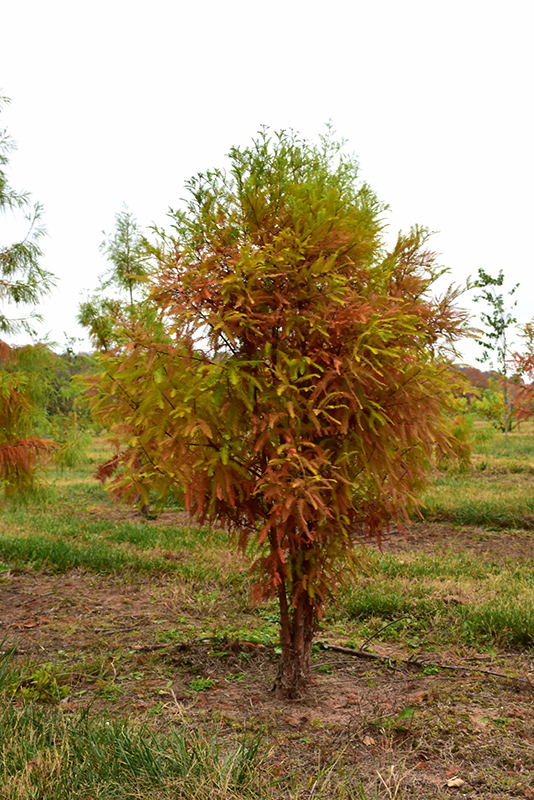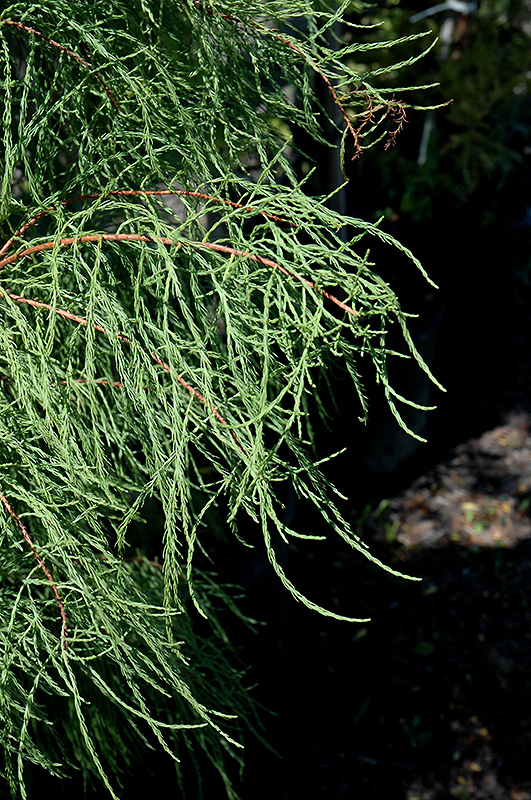Plant Finder
Debonair Baldcypress
Taxodium distichum 'Morris'
Height: 60 feet
Spread: 25 feet
Sunlight:
![]()
Hardiness Zone: 5
Other Names: Pond Baldcypress
Description:
A particularly beautiful deciduous conifer with lovely pendulous foliage along its formal pyramidal habit; narrow bright green leaves turn bronze in fall, a broad trunk and odd knee-like protrusions at the base when grown in standing water; very adaptable
Ornamental Features
Debonair Baldcypress is primarily valued in the landscape for its distinctively pyramidal habit of growth. It has emerald green deciduous foliage. The ferny bipinnately compound leaves turn an outstanding coppery-bronze in the fall. The shaggy antique red bark adds an interesting dimension to the landscape.
Landscape Attributes
Debonair Baldcypress is a deciduous tree with a strong central leader and a distinctive and refined pyramidal form. It lends an extremely fine and delicate texture to the landscape composition which can make it a great accent feature on this basis alone.
This is a relatively low maintenance tree, and is best pruned in late winter once the threat of extreme cold has passed. Deer don't particularly care for this plant and will usually leave it alone in favor of tastier treats. It has no significant negative characteristics.
Debonair Baldcypress is recommended for the following landscape applications;
- Shade
- Vertical Accent
Planting & Growing
Debonair Baldcypress will grow to be about 60 feet tall at maturity, with a spread of 25 feet. It has a high canopy with a typical clearance of 7 feet from the ground, and should not be planted underneath power lines. As it matures, the lower branches of this tree can be strategically removed to create a high enough canopy to support unobstructed human traffic underneath. It grows at a medium rate, and under ideal conditions can be expected to live for 80 years or more.
This tree should only be grown in full sunlight. It is an amazingly adaptable plant, tolerating both dry conditions and even some standing water. It is not particular as to soil type, but has a definite preference for acidic soils, and is subject to chlorosis (yellowing) of the foliage in alkaline soils. It is somewhat tolerant of urban pollution. Consider applying a thick mulch around the root zone in winter to protect it in exposed locations or colder microclimates. This is a selection of a native North American species.
Disclaimer - Rutgers Landscape & Nursery Plant Finder is an online resource representing many of the varieties that we carry over the course of the season, and is intended for informational purposes only. Inventory varies seasonally, so we cannot guarantee that every plant will be in stock at all times - please contact Rutgers directly for current availability.


